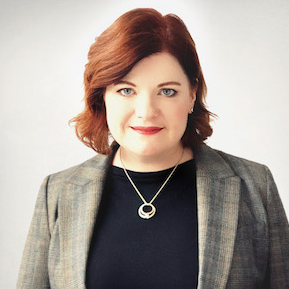
Earlier this month, McDonald’s announced that it will bring back the role of a global CMO, less than a year after scrapping it. In 2019, the company opted to split the role between the technical and non-technical aspects, but is now reinstating a CMO to drive the brand forward.
McDonald’s isn’t the only brand to bring back a CMO role. Last year, Coca-Cola also appointed a new CMO, after two years of trialling a different model. These examples showcase the two main schools of thought around the CMO role today. The first is the belief that the CMO role has become too broad, and should be divided between the traditional and technical aspects of marketing. The other belief is that the CMO should remain at the heart of marketing efforts.
This split has come about largely due to technological innovation changing the CMO role dramatically in the last few years. While the central pillars of the CMO’s role are still lead generation and brand reputation, tech now also plays a central role. All CMOs are expected to have a high level of technical expertise, leading some companies to encourage IT and tech experts to take a greater role in marketing.
On the other hand, the current pandemic has forced brands to closely consider how they communicate, and setting the appropriate tone and messages is critical. This has shone a light on the importance of the CMO for more traditional reasons, as they have the customer insight needed to effectively guide communications.
Let’s take a closer look at both philosophies.
Two approaches to the role
The first states that a CMO’s role should be more focused on traditional marketing tasks, such as managing demand generation, and the data and technology-focused tasks should be assigned to another leader, such as a Chief Digital Officer. For example, in 2019 Uber replaced the CMO role with a head of marketing, communications and public policy and Johnson & Johnson split the CMO role between a number of other executives.
The second states that the role should remain broad and all-encompassing, overseeing both the traditional aspects of marketing and the new ones, such as implementing the tools to show tailored content to individuals in real time. Given the CMO remains the closest to customers and the markets, they are best placed to lead a team to drive customer experience strategy and understand customer trends and demands.
The CMO role: why it should remain all-encompassing
Whilst everyone agrees that for a business to remain competitive it needs to evolve and adapt to change, I believe the role provides more value through the second approach.
Marketing in today’s environment starts with a clear, single view of the customer, which only the CMO can have. The role sits at the centre of customer data, behaviour and interaction and will always be the best placed to drive both customer experience strategy, as well as to incorporate this strategy within the company’s digital transformation plans and wider business objectives.
However, it is important to accept that there is an increasing need for CMOs to understand the martech stack and how to work effectively with data. Therefore, close integration between the IT and marketing teams is crucial in order to meet ever-increasing customer expectations and to ensure that customer journeys are not fragmented.
Finally, CMOs are used to working with detailed budgets, and must extend this skill to investing effectively in martech. Some 66% of marketing execs are already regularly involved in trying to secure budget on digital marketing and CX technology, so high level strategy and effective deployment of resources is an important skill for CMOs.
How CMOs can prove their worth
There are several ways in which the CMO can strengthen their position with the board and continue to deliver value to the business:
1. Sort the data. With customers interacting with brands on more platforms than ever, brands now collect vast amounts of data. For it to provide valuable insights into customer behaviour and preferences, it must be connected – not in siloes.
2. Invest in martech and use it to drive effective personalisation efforts. This is already a strategy being used by many marketers – research from SoDA found that marketing leaders’ top areas of investment to fuel personalisation are Data & Analytics and Technology Platforms.
3. Get customer experience right, by looking into where customers drop out of the purchase journey, which platforms they are most likely to use, or what content drives the most sales, for example.
4. Build strong relationships with the CEO and the board in order to understand key business objectives and align marketing strategy to help drive the business forward.
5. Report ROI and metrics back to the business and make it clear what value marketing has brought to the business – after all, the data doesn’t lie.
So, while the role of the CMO has evolved and grown in recent years, they remain the best placed to understand customer needs and how to meet them. By working closely with tech teams, making effective use of data, and showing the value that marketing brings to business, the CMO role should be here to stay.

Interested in hearing leading global brands discuss subjects like this in person?
Find out more about Digital Marketing World Forum (#DMWF) Europe, London, North America, and Singapore.







Thank you for this amazing article.